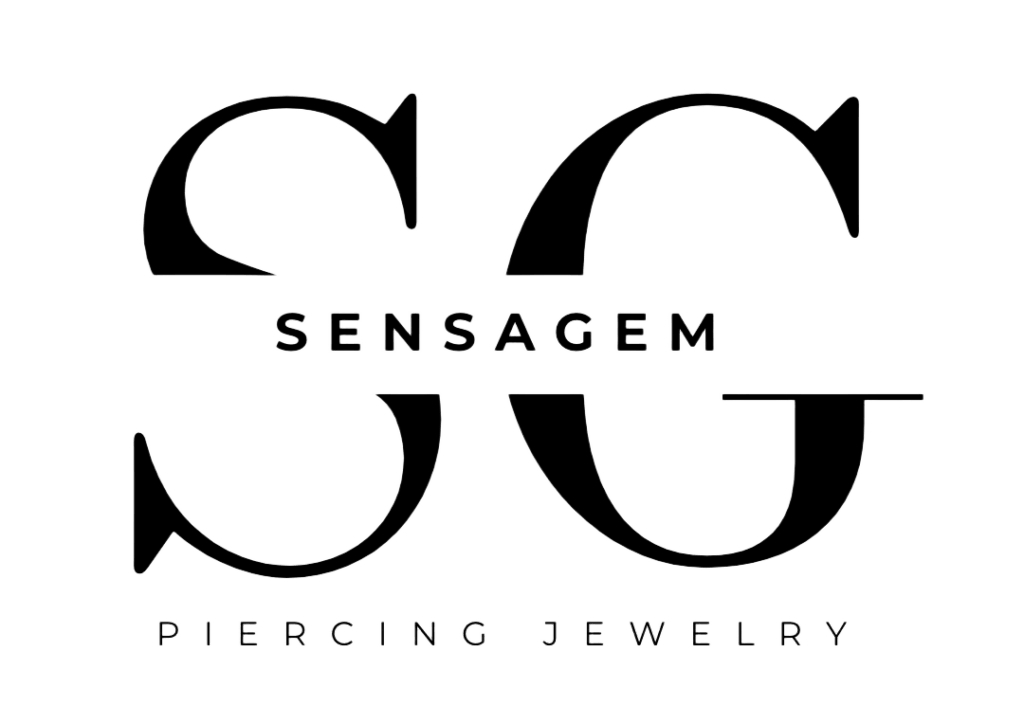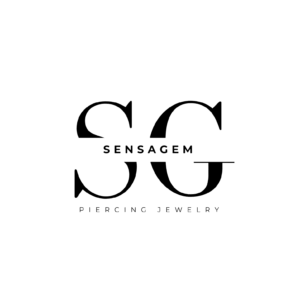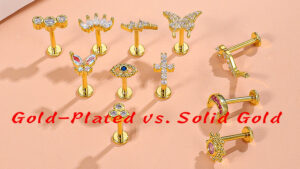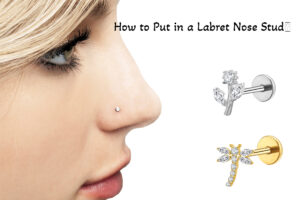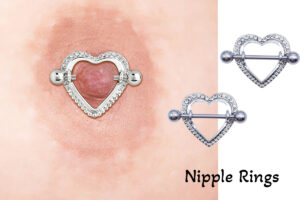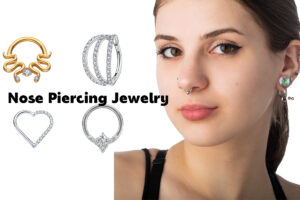Einführung:
When embarking on the journey to create a unique line of body piercing jewelry, it’s essential to understand the entire design process from the first creative spark to the final product. Whether you’re a brand owner, a retailer, or a piercing jewelry distributor, working with a reliable body piercing jewelry manufacturer is key to turning your vision into reality. As you navigate this process, selecting the right materials—such as 316L Edelstahl Und ASTM F136 Titan—plays a crucial role in the quality, Haltbarkeit, and appeal of the final product.
In this blog, we’ll walk through the entire body piercing jewelry design process, from conceptualization to the final piece ready for sale. We’ll also focus on the importance of choosing the right materials and how they impact the overall product experience. For those interested in customizing their designs, we’ll explain the differences between OEM Und ODM manufacturing options. Let’s dive into the world of piercing jewelry manufacturing.
1. Market Research and Trend Analysis
Before designing any jewelry, the first step is understanding your target audience and the market landscape. As a Hersteller von Piercingschmuck, we often conduct extensive market research to determine trends and consumer preferences. This includes analyzing popular designs, styles, and materials that resonate with the target market.
Current trends in body piercing jewelry show a growing demand for high-quality, durable materials that combine beauty and functionality. Both 316L Edelstahl Und ASTM F136 Titan have emerged as top choices due to their corrosion resistance, biocompatibility, and ability to withstand daily wear. For jewelry brands, focusing on these materials can help build trust with consumers looking for premium products.
2. Brand Positioning and Design Goals
Once the market research is complete, the next step is to define your brand’s positioning. Are you catering to a luxury market or focusing on affordable, high-quality pieces? What is the aesthetic of your brand—minimalist, edgy, or classic? These decisions influence the design process and the materials chosen.
Zum Beispiel, 316L Edelstahl is an excellent choice for affordable yet durable body piercing jewelry, while ASTM F136 Titan is a premium option for those looking for lightweight and hypoallergenic pieces. Your brand’s identity should align with the materials you choose, as both steel and titanium have distinct properties that appeal to different consumer segments.
3. Creative Concept Development and Initial Design
The creative phase is where the magic happens. Designers take inspiration from various sources—cultural trends, nature, or even customer feedback—to craft designs that align with the brand’s identity. At this stage, the focus is on conceptualizing the piece’s look and functionality.
Der Hersteller von Piercingschmuck typically provides initial sketches or 3D renderings to visualize how the final product will look. These designs usually undergo several revisions before moving forward. It’s essential to consider both aesthetic appeal and practicality at this stage.
For body piercing jewelry, functional aspects like comfort, ease of wear, and hypoallergenic properties are critical. With 316L Edelstahl Und ASTM F136 Titan, these concerns are significantly alleviated, as both materials are known for being skin-friendly and durable, making them ideal for long-term wear.
4. 3D Modeling and Engineering Design
After the initial sketches are approved, the design is translated into a 3D model using CAD (Computer-Aided Design) software. This is an essential step in modern piercing jewelry manufacturing, as it allows for precise visualization of the final product. Der Hersteller von Piercingschmuck will take into account factors such as dimensions, Form, weight distribution, and structural integrity.
Once the 3D model is complete, it’s converted into detailed engineering drawings. These drawings specify materials, Größe, and functional requirements, ensuring that the design is feasible for mass production.
At this point, you’ll also need to confirm your material choice—316L Edelstahl Und ASTM F136 Titan are both commonly used in this phase. Stainless steel is robust, resistant to corrosion, and perfect for a wide range of designs. Titan, auf der anderen Seite, offers exceptional strength at a lighter weight and is ideal for customers with sensitive skin.
5. Materialauswahl: Stainless Steel vs. Titan
One of the most crucial steps in the design process is selecting the right material. Der body piercing jewelry manufacturer will work with you to choose materials that align with your design’s functionality, budget, and market demands. Let’s take a deeper look at the two most popular materials:
316L Edelstahl
•Haltbarkeit: 316L stainless steel is highly resistant to rust, corrosion, and staining, making it a durable choice for body piercing jewelry.
•Affordability: Stainless steel offers a cost-effective option without sacrificing quality, making it ideal for businesses targeting a broader market.
•Hypoallergen: It’s considered hypoallergenic and is safe for most skin types, Verringerung des Reizungsrisikos.
ASTM F136 Titan
•Lightweight and Strong: Titanium is much lighter than stainless steel, making it ideal for larger or more intricate pieces that still need to be comfortable to wear.
•Hypoallergenic and Biocompatible: Titanium is the gold standard for hypoallergenic materials and is particularly suited for people with sensitive skin or allergies.
•Longevity: Titanium is incredibly durable and resistant to corrosion, making it ideal for jewelry that is worn continuously.
By choosing the right material, your jewelry can stand out in the market, whether you’re going for the robust feel of stainless steel or the premium appeal of titanium.
6. Prototyping and Sample Testing
Once the design is finalized and the materials are selected, the next step is creating a prototype. The prototype gives a tangible form to the design, allowing you to evaluate its look, feel, und Funktionalität. Der Hersteller von Piercingschmuck typically creates a small batch of samples for testing and review.
Testing is an essential part of the prototyping phase, especially for body piercing jewelry. Samples are often worn to ensure they fit comfortably and safely on the body. ASTM F136 Titan Und 316L Edelstahl both provide excellent durability and skin compatibility, but testing ensures that your pieces meet all required standards before production begins.
7. Manufacturing and Mass Production
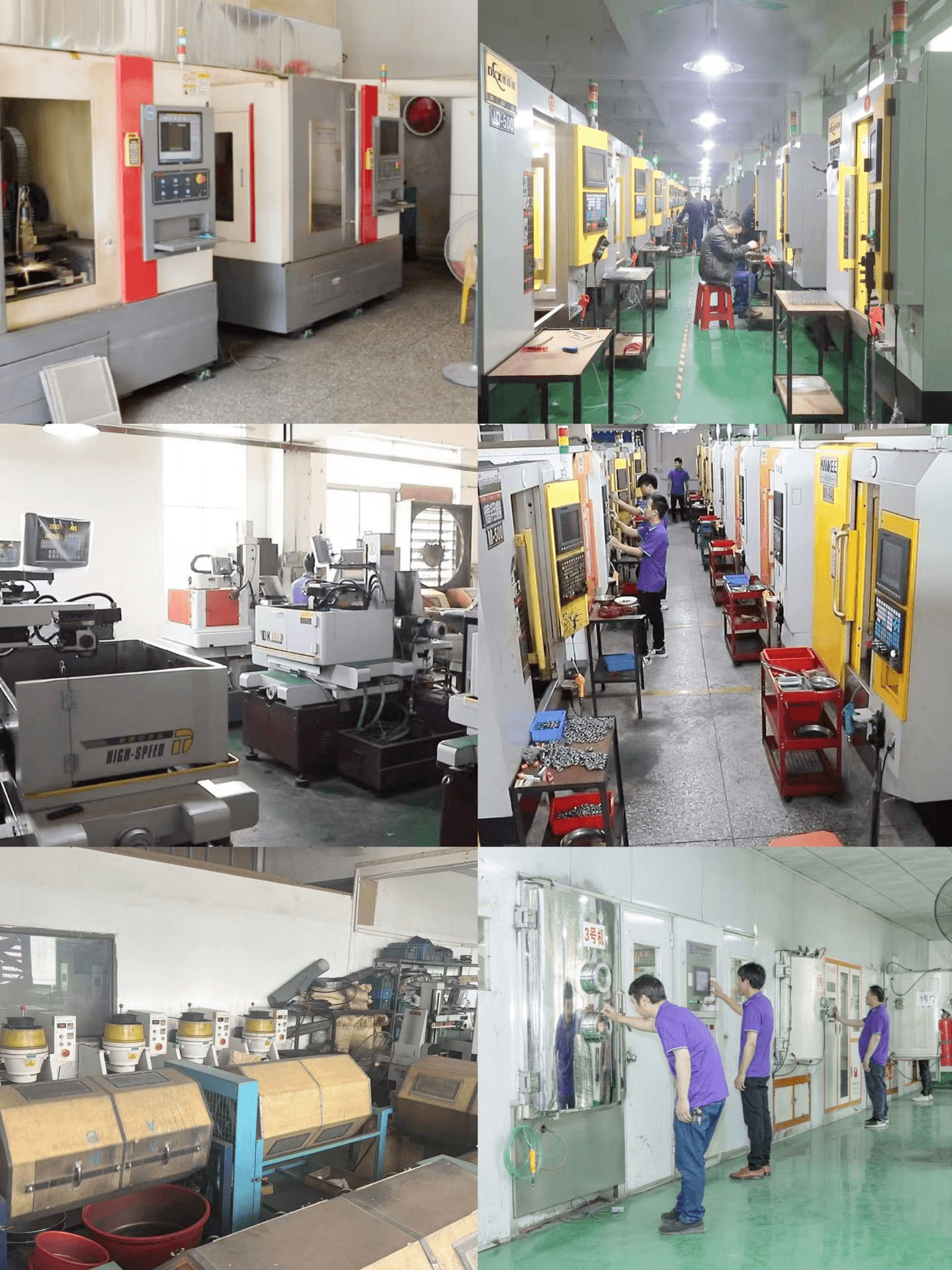
Once the prototype is approved and any necessary adjustments have been made, the jewelry moves into the production phase. As a piercing jewelry manufacturer, we work closely with you to ensure that the production process runs smoothly. This includes overseeing quality control, ensuring that materials meet required standards, and maintaining a consistent level of craftsmanship throughout the production run.Mass production typically involves high-quality machinery and skilled artisans to ensure each piece is made to perfection. Depending on your order size, the manufacturing process can take several weeks, especially if the jewelry is complex or requires special finishes.
8. Packaging and Delivery
Once the body piercing jewelry is produced, it’s time for packaging and delivery. Packaging plays an essential role in ensuring the jewelry arrives safely and maintains its quality. Zusätzlich, thoughtful packaging can enhance the customer’s experience and reinforce your brand identity.
After packaging, the pieces are shipped to the designated location or directly to consumers. As a Hersteller von Piercingschmuck, we ensure that every order is carefully inspected and packed to prevent damage during transport.
Abschluss
Creating high-quality body piercing jewelry is a detailed process that requires careful planning, Design, and execution. From the initial market research to the selection of materials like 316L Edelstahl Und ASTM F136 Titan, each step is critical in ensuring the final product meets customer expectations. Whether you choose OEM oder ODM Herstellung, the right Hersteller von Piercingschmuck can help you navigate these stages and bring your vision to life.
For those interested in learning more about the materials used in piercing jewelry, Schauen Sie sich unser an guide on ASTM F136 Titanium and 316L Stainless Steel. If you’re unsure about which manufacturing option suits your business, read our OEM vs. ODM guide to help you make an informed decision.
Ready to create your own custom piercing jewelry line? Contact us today and let’s bring your ideas to life.
